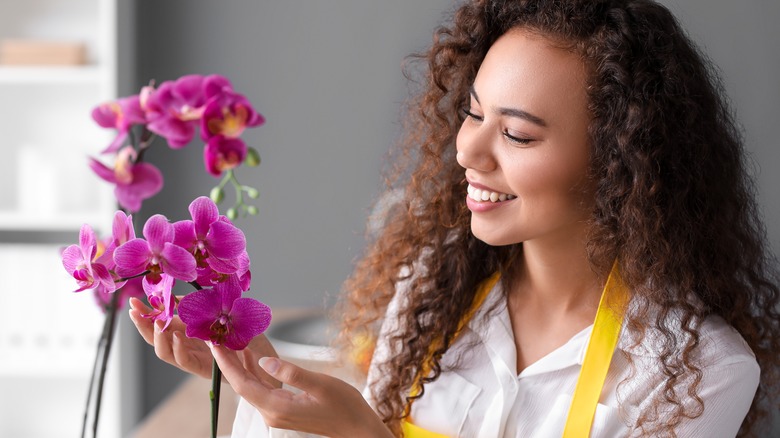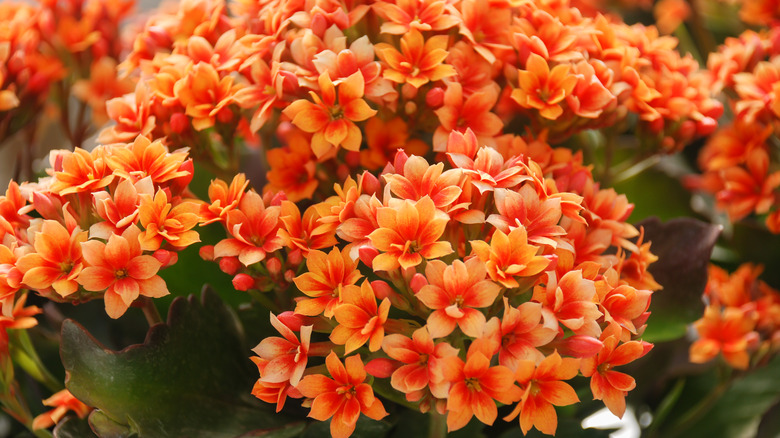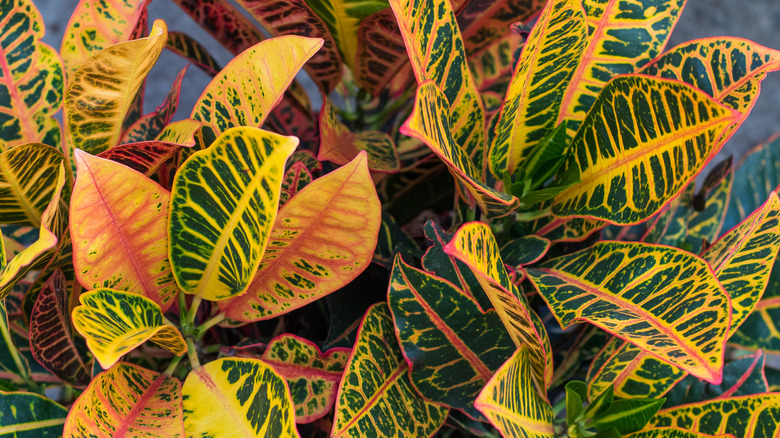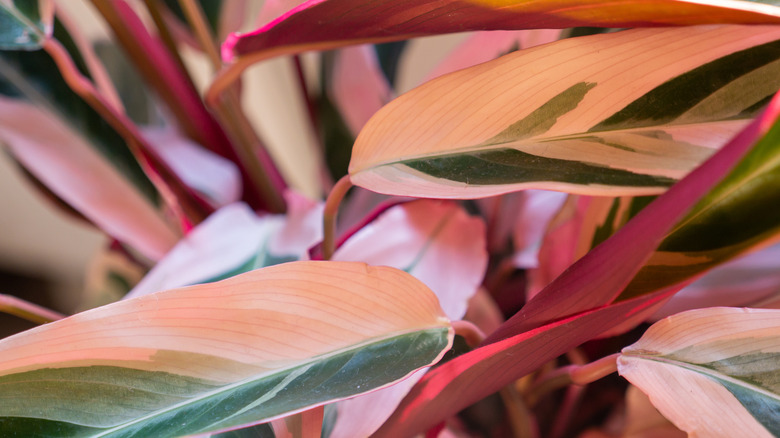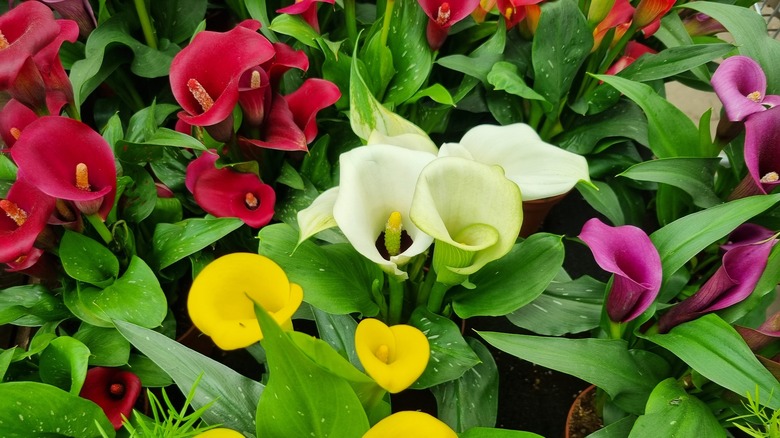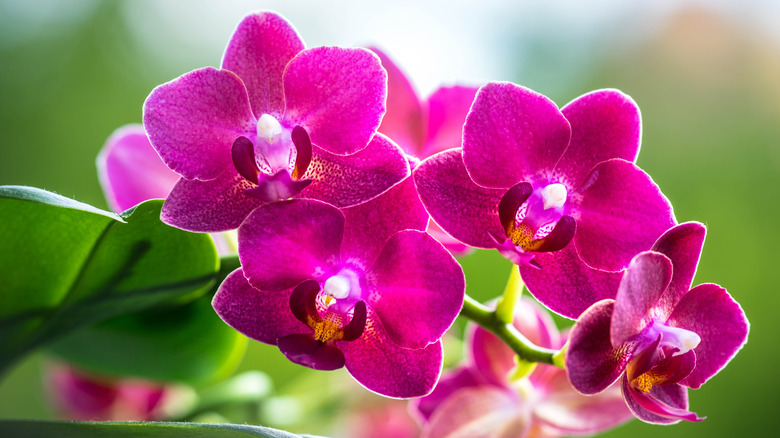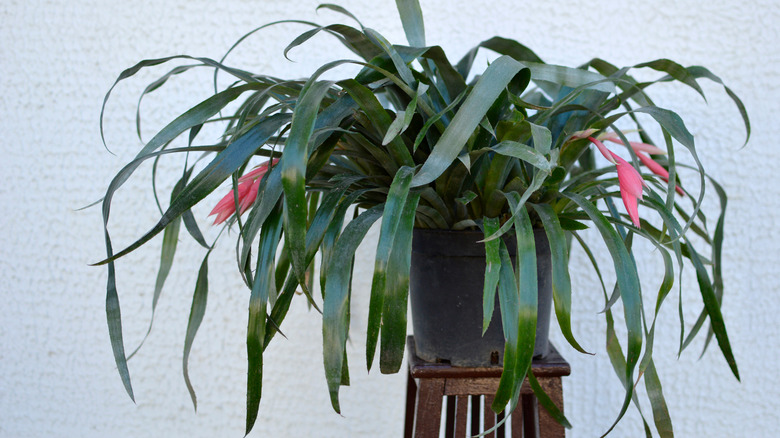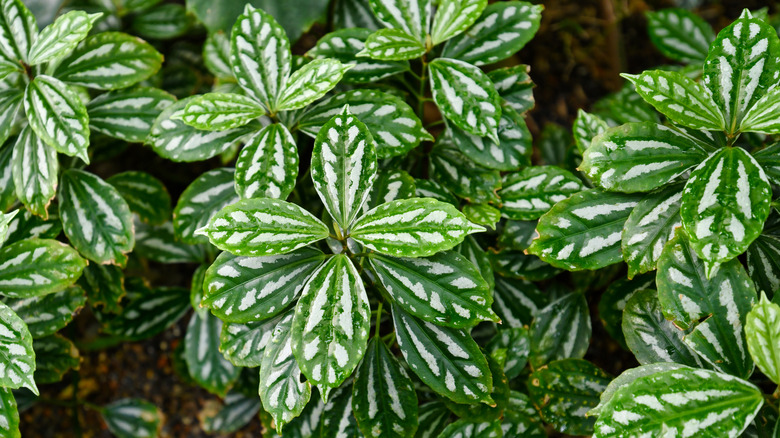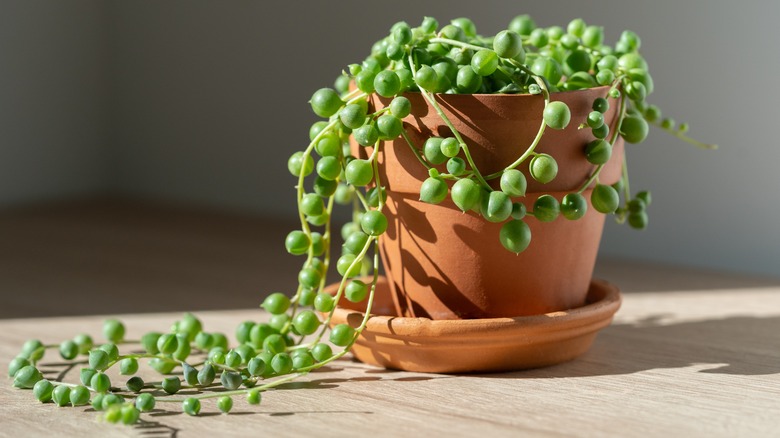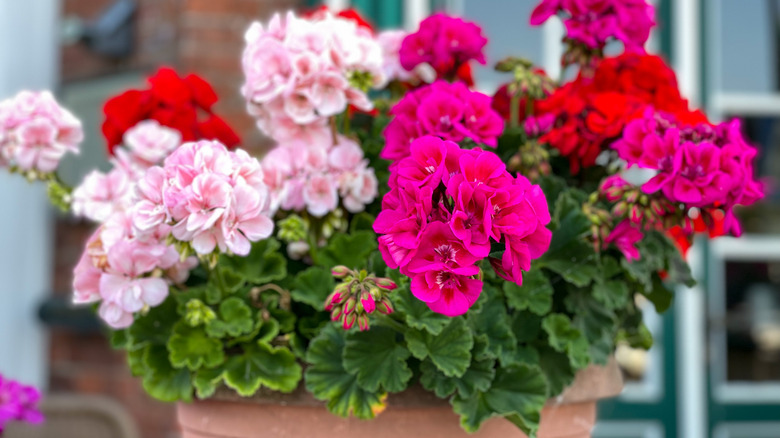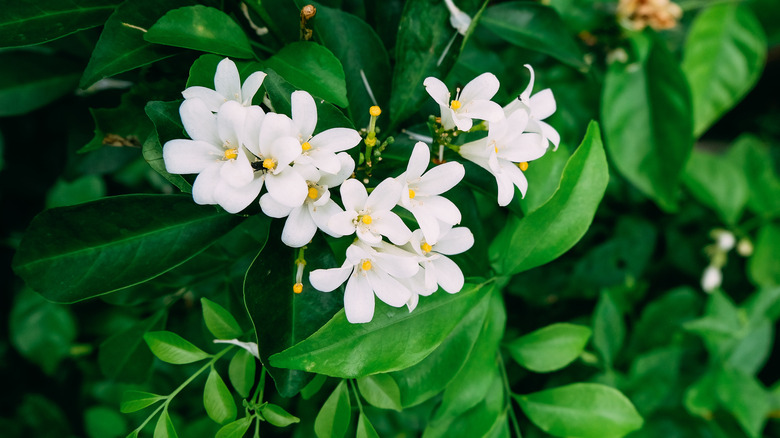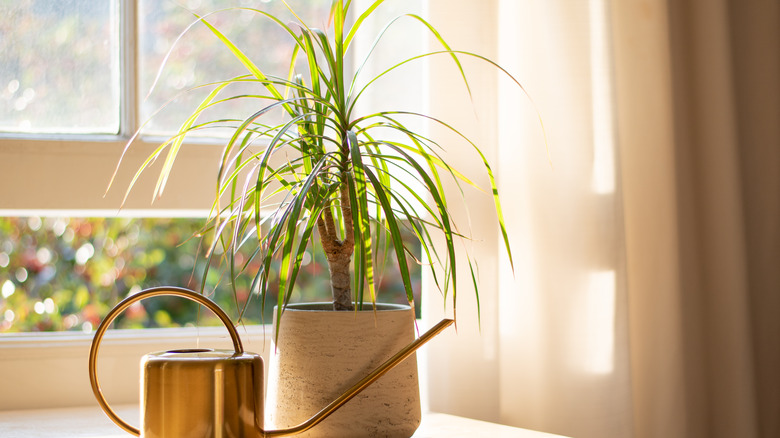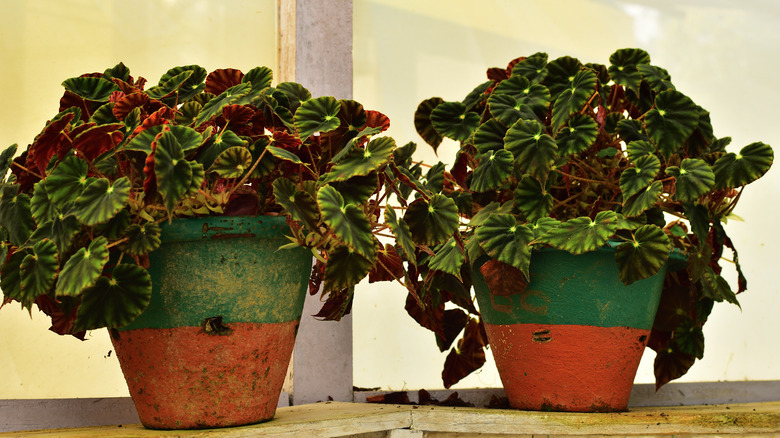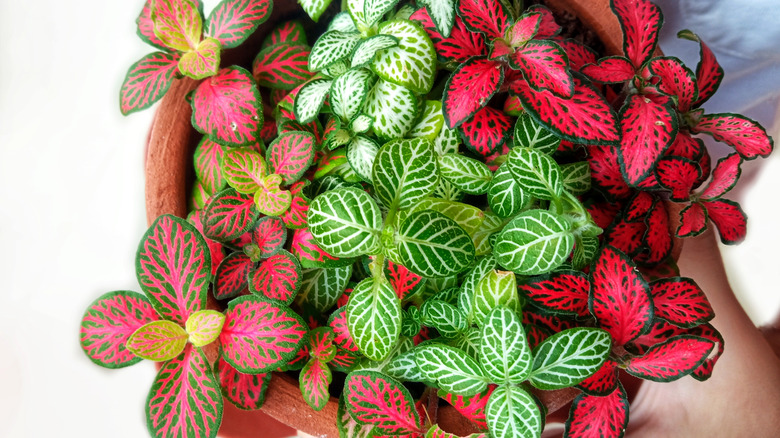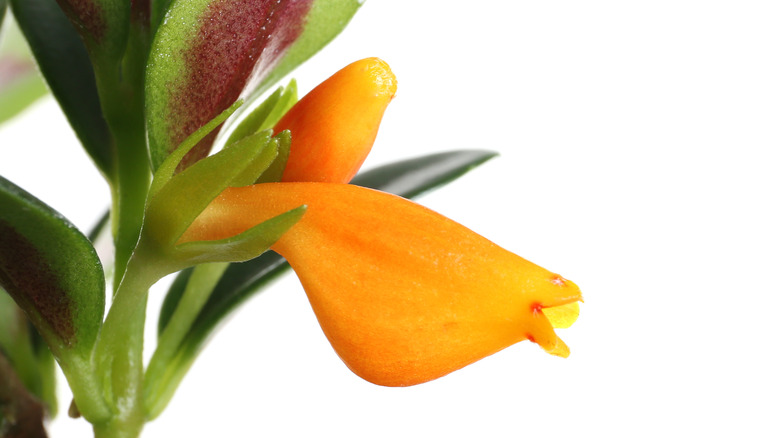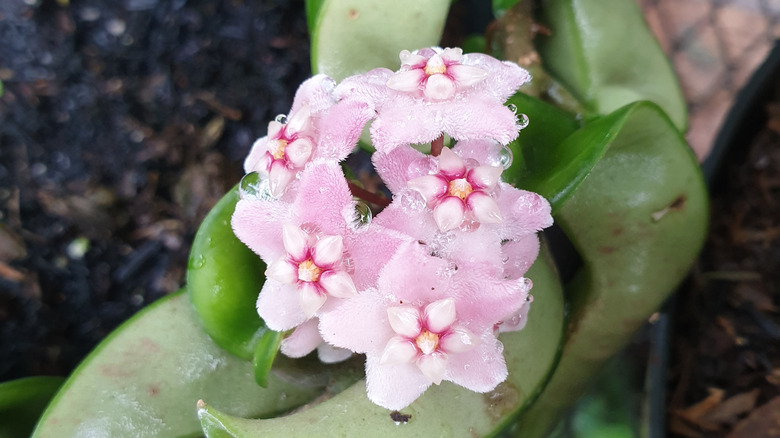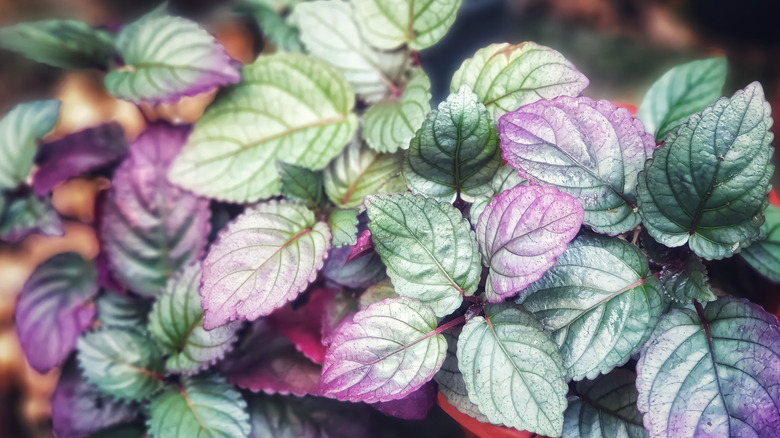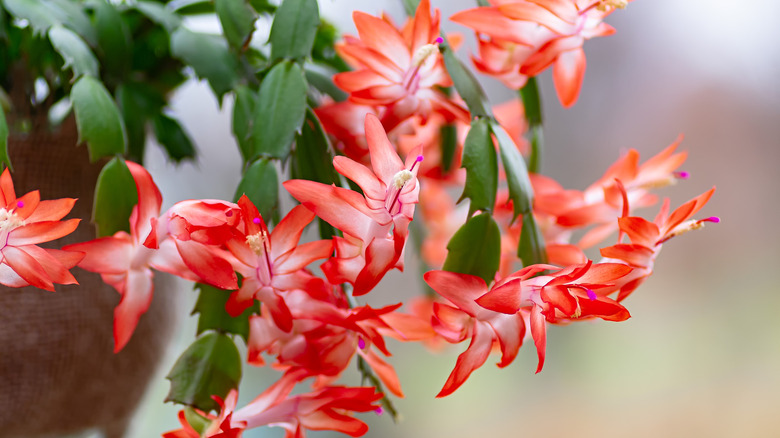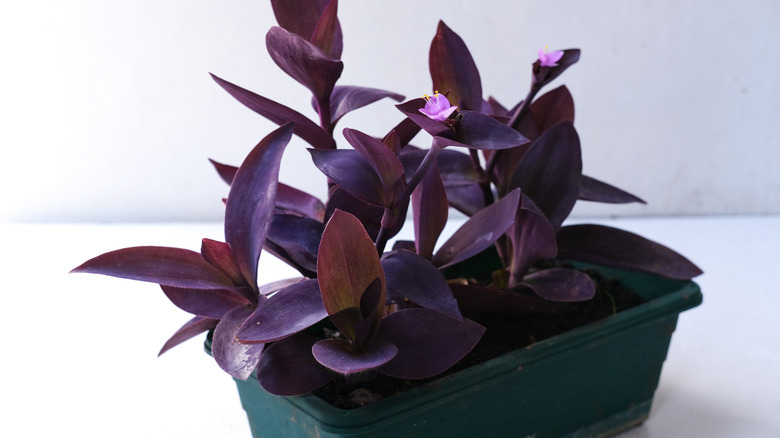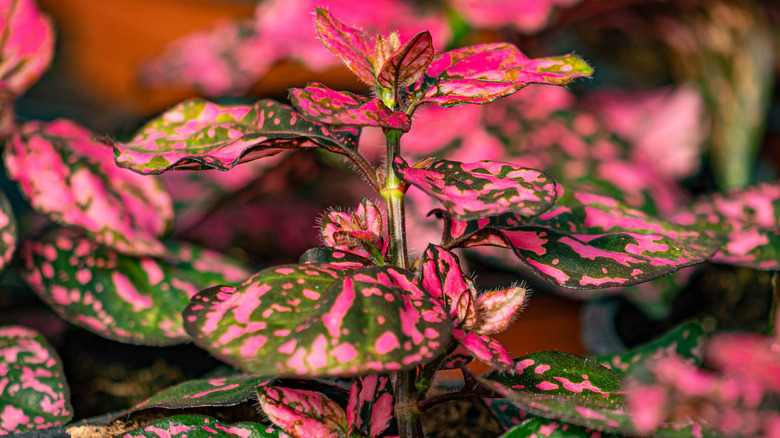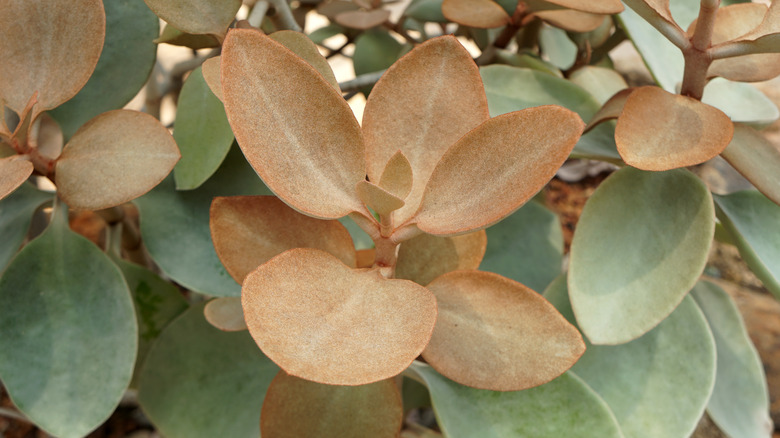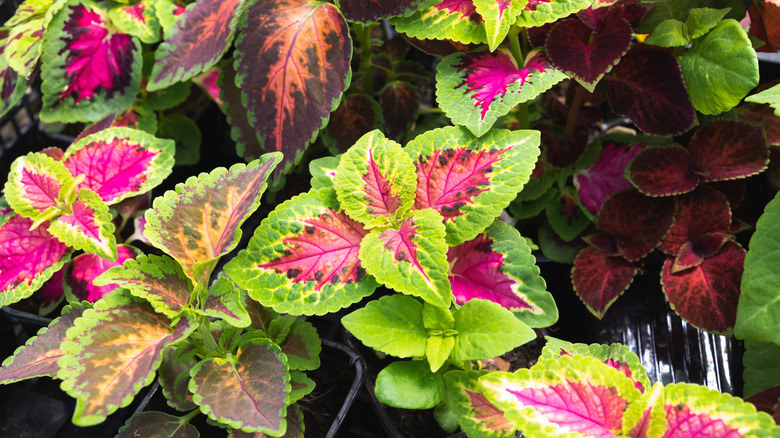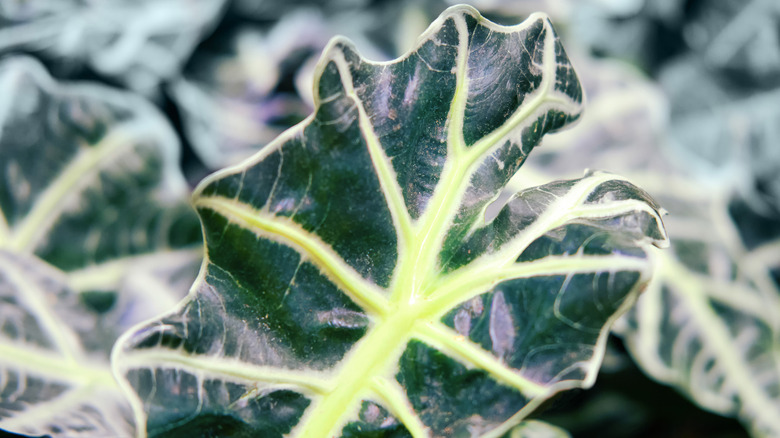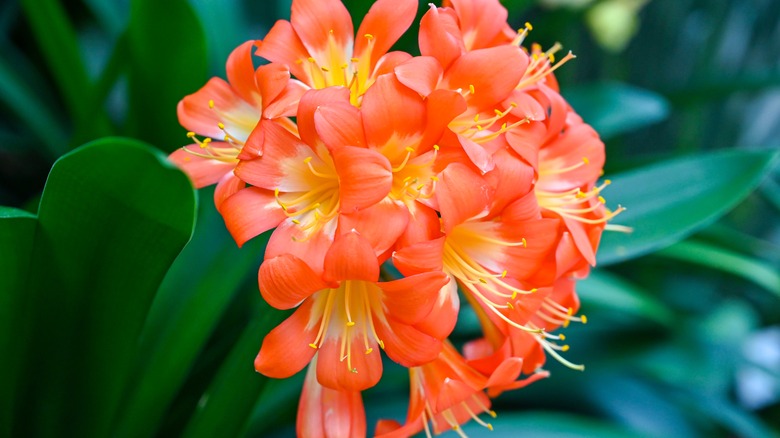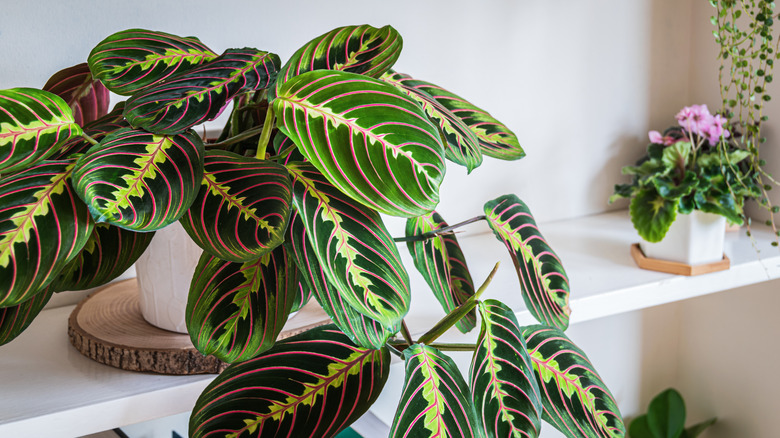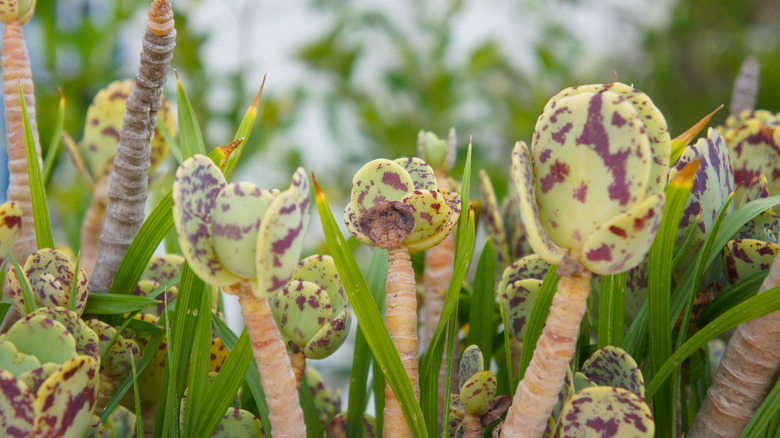25 Colorful Houseplants That Will Perk Up Your Indoor Space
Impressing guests with your lush, vibrant, and varicolored plants never gets old. That being said, one should always consider the conditions within their home before purchasing a new plant. As told by the University of Maryland Extension, location, lighting, and the health of the plant initially are of the utmost importance. Generally, if you have little experience with indoor plants, you'll want to start with some that are known to be easy to care for. These kinds of plants are usually drought-tolerant, neglect-tolerant, and adaptable to many types of soil and sunlight. Thankfully, there are many examples, and string of pearls, aluminum plants, and nerve plants are just a few of them. Plants such as these are often chosen for their low-maintenance habit, but they are also loved universally for their unique growth, colorful foliage, and showy flowers.
Houseplants bring forth new life and purpose when your décor becomes monotonous. Among these 25 colorful options, some change shape and color as they age through the seasons. As they bloom or grow into their variegation, you'll be surprised by the everchanging decor that you've so easily implemented.
1. Kalanchoe
Kalanchoe flowers (Kalanchoe blossfeldiana) are commonly grown in the winter months in the United States for their bright flowers that bloom early in the season. The succulent is quite ornamental, even when it isn't in bloom. It shows off scalloped, dark green leaves throughout the year. According to the Clemson Cooperative Extension, you should grow kalanchoe inside your home if you are a beginner gardener.
Bloom Season: Winter and early spring
USDA Growing Zone: 10 to 12
Growing Conditions: Bright direct and indirect light
Soil Type: Well-aerated and well-drained potting mix
Size: 8 inches to 1 foot tall
2. Croton plant
Croton plants (Codiaeum variegatum) are rarely overlooked when home gardeners are shopping for a new and bright indoor plant, and for good reason. This popular Codiaeum species is extremely ornamental and relatively easy to care for. According to the University of Wisconsin-Madison, all it needs is some indirect sunlight, well-drained potting soil, regular watering, and warm temperatures.
Bloom Season: Year-round
USDA Growing Zone: 11 to 12
Growing Conditions: Bright to medium indirect light
Soil Type: Well-drained, fertile, and moist potting mix
Size: 2 to 6 feet tall and wide
3. Triostar Stromanthe
Triostar Stromanthe (Stromanthe sanguinea 'triostar') is colorful like the croton plant, but it has one major difference — it requires very little sunlight. You can place it in the shadiest part of your home, and it will still shine with incredible color and variegation. Monrovia describes the Stromanthe as an exotic plant with foliage that is painted cream, green, and pink.
Bloom Season: Spring
USDA Growing Zone: 10 to 11
Growing Conditions: Low indirect light
Soil Type: Well-drained potting soil
Size: Up to 3 feet tall and 2 feet wide
4. Calla lily
Calla lilies (Zantedeschia rehmannii) are lovely and easy-to-grow houseplants that produce recognizable flowers in the spring. These blooms may be white, orange, pink, yellow, purple, or burgundy, as listed by Longfield Gardens. In the home, you can expect calla lilies to perform best when situated in bright indirect sunlight with well-draining soil, where they will thrive for upwards of four months.
Bloom Season: Early to late spring
USDA Growing Zone: 8 to 10
Growing Conditions: Bright indirect sunlight
Soil Type: Well-draining potting mix
Size: 1 to 2 feet tall
5. Moth orchid
Moth orchids (Phalaenopsis spp.) are a species of epiphytic plants that bloom with delightful flowers during the coldest months of the growing season. The Phalaenopsis genus is well-known for its many species and cultivars that can be grown inside your home. The University of Maryland Extension notes that moth orchids can be attributed to the boom in the popularity of growing orchids indoors.
Bloom Season: Winter to spring
USDA Growing Zone: 11 to 12
Growing Conditions: Bright indirect light
Soil Type: Loose potting medium
Size: No larger than 3 feet tall
6. Queen's tears plant
The queen's tears plant (Billbergia nutans) is another stunning epiphyte. San Marcos Growers describes it as a drought-tolerant succulent plant with ornate hanging flowers. Though the queen's tears plant is native to Brazil's warm and humid climate, it can also grow in drier and colder regions such as the Pacific Northwest.
Bloom Season: Spring
USDA Growing Zone: 8 to 11
Growing Conditions: Bright to medium indirect light
Soil Type: Well-draining and organically rich potting mix
Size: 1 to 2 feet tall and wide
7. Aluminum plant
Aluminum plants (Pilea cadierei) are named after the interesting pattern on their leaves. The toothed, green foliage of the plant has stripes of silvery gray that look like painted-on aluminum. As said by Missouri Botanical Garden, this herbaceous perennial is frequently chosen as an indoor plant because of its easy care requirements.
Bloom Season: Rarely flowers indoors
USDA Growing Zone: 11 to 12
Growing Conditions: Bright, medium, or low indirect light
Soil Type: Well-drained potting mix
Size: 9 to 12 inches tall and 6 to 9 inches wide
8. String of pearls plant
The string of pearls plant (Senecio rowleyanus) won't be the most colorful plant in your collection, but it's sure to be the most unique. As mentioned by the University of Wisconsin-Madison, this succulent, native to South Africa, boasts spherical leaves that are strung together by the plant's stems, hence the common name. These strings of green pearls look their best hanging from a pot or draped across a shelf.
Bloom Season: Summer
USDA Growing Zone: 9 to 11
Growing Conditions: Bright to medium indirect light
Soil Type: Well-draining potting mix
Size: 1 to 3 feet long
9. Geranium
The geranium plant (Pelargonium spp.) is an extremely popular flowering annual that can bloom in an array of colors. This easy-to-care-for plant can be grown indoors or outdoors in a variety of ways. Inside, geranium flowers prefer bright indirect light and average soil, states Costa Farms.
Bloom Season: Late spring and summer
USDA Growing Zone: 9 to 12
Growing Conditions: Bright indirect light
Soil Type: Commercial potting soil mix
Size: 1 to 2 feet tall and wide
10. Jasmine plant
If you're looking for a houseplant with the added benefit of making your house smell fresh, jasmine (Jasminum spp.) is the plant for you. This fragrant flowering perennial grows easily indoors where it receives bright light and plenty of water. North Carolina State Extension suggests choosing a vining species that will trail from a hanging basket or spread around a container.
Bloom Season: Summer, spring, or winter depending on the cultivar
USDA Growing Zone: 7 to 10
Growing Conditions: Bright indirect light
Soil Type: Well-draining potting mix
Size: 3 to 30 feet tall depending on the cultivar
11. Dragon tree
Dragon trees (Dracaena marginata) don't only have a cool name, they also have an incredible look. A Dracaena species, this exciting houseplant is low-maintenance, colorful, and quite large. When planted in a container, its spiky foliage is just the thing to brighten that boring hallway in your home. The Sill explains that you only have to water it a couple of times per month as long as you provide it with bright light.
Bloom Season: Spring
USDA Growing Zone: 10 to 12
Growing Conditions: Bright light
Soil Type: General-purpose potting mix
Size: 16 to 40 inches tall
12. Painted-leaf Begonia
Painted-leaf begonias (Begonia rex-cultorum), also known as rex begonias, are a species of brightly colored plants that produce small, insignificant flowers. As a houseplant, begonias such as these catch the attention of guests with their irregularly shaped leaves that are typically colored with red, green, silver, and burgundy markings, as explained by the University of Vermont.
Bloom Season: Summer
USDA Growing Zone: 10 to 12
Growing Conditions: Bright, medium, or low indirect light
Soil Type: Average potting mix
Size: 12 to 18 inches tall and wide
13. Nerve plant
Nerve plants (Fittonia albivenis) are great for brightening up a dark corner of your home. These shade-lovers boast lots of green foliage that is lined with white, red, silver, or cream-colored veins. Costa Farms describes the nerve plant as a tropical houseplant with minimal care needs. It also has the added benefit of being an air purifier.
Bloom Season: Summer
USDA Growing Zone: 11 to 12
Growing Conditions: Bright, medium, or low indirect light
Soil Type: Well-drained peaty or soil-based potting mix
Size: 6 inches tall and 1 foot wide
14. Goldfish plant
The goldfish plant (Nematanthus gregarius) is well-known for its orange-to-yellow flowers that are shaped like the common goldfish. Also called the clog plant, this trailing evergreen perennial can be identified by its thick, glossy, dark green leaves when it is not in bloom, as per RHS.
Bloom Season: Summer
USDA Growing Zone: 10 to 11
Growing Conditions: Bright indirect light
Soil Type: Well-drained potting mix
Size: 20 inches tall and 40 inches wide
15. Honey plant
Honey plants (Hoya carnosa 'Compacta') are named for their flowers that drip nectar in the spring and summer. Though they can be messy, this Hoya plant is a good houseplant option because of its vining growth habit and beautiful flowers that cluster together between the leaves. As shown by North Carolina State Extension, honey plants can be trained to climb on walls and trellises.
Bloom Season: Spring and summer
USDA Growing Zone: 10 to 12
Growing Conditions: Bright direct and indirect light
Soil Type: Well-drained, organic potting mix
Size: 15 inches long
16. Red ivy
Red ivy (Hemigraphis Alternata) is a compact herbaceous perennial in the Acanthaceae family. Outdoors, it can spread widely and become a nice groundcover plant. However, it is more often grown indoors due to its need for warm temperatures. When grown as a houseplant, red ivy is usually potted in a hanging basket where its metallic foliage can be seen from below, as told by Missouri Botanical Garden.
Bloom Season: Summer
USDA Growing Zone: 10 to 11
Growing Conditions: Medium to bright light
Soil Type: Moist, rich, and well-draining potting mix
Size: 6 inches to 1 foot tall
17. Christmas cactus
The Christmas cactus (Schlumbergera russelliana) is characterized by flat and segmented stems, tubular flowers, and weeping growth. North Carolina State Extension advises home gardeners to plant the cactus species in light soil with some moisture, and it should be placed in bright light. With good care, the Christmas cactus will reward you with pink to red flowers during the holiday season.
Bloom Season: Fall and winter
USDA Growing Zone: 9 to 11
Growing Conditions: Bright light
Soil Type: Moist, well-draining potting mix
Size: 6 inches to 1 foot tall
18. Purple heart plant
The purple heart plant (Tradescantia pallida) is attractive whether it is flowering or not. During its bloom season, small lavender flowers appear that contrast its dark purple foliage. This foliage is typically what the plant is grown for, and this only makes sense because its blooms are unpredictable, as per the University of Wisconsin-Madison.
Bloom Season: Sporadically blooms from summer to fall
USDA Growing Zone: 7 to 10
Growing Conditions: Bright light or full sun
Soil Type: Well-draining potting mix
Size: 1 foot tall but spreads widely
19. Polka dot plant
The polka dot plant (Hypoestes phyllostachya) has many gorgeous cultivars in a few different colors. A seasonal bloomer, this perennial is grown for its foliage. The leaves seem to have a green base, but they are littered with splashes of pink, white, or purple. In addition to making a good houseplant, it can also look great in a terrarium, as recommended by Missouri Botanical Garden.
Bloom Season: Summer
USDA Growing Zone: 10 to 11
Growing Conditions: Bright indirect light
Soil Type: Well-drained potting mix
Size: 12 to 24 inches tall and 9 to 12 inches wide
20. Copper spoon kalanchoe
Copper spoon kalanchoe (Kalanchoe orgyalis) features unusual succulent leaves that are coppery-orange on top and green-gray underneath. Native to Madagascar, like almost all other Kalanchoe species, the copper spoon is a slow-growing and winter-blooming shrub that can reach 6 feet tall in adulthood, states San Marcos Growers. However, when grown indoors in a container, it will stay much smaller.
Bloom Season: Winter
USDA Growing Zone: 9 to 11
Growing Conditions: Direct sunlight
Soil Type: Well-draining potting mix
Size: 4 to 6 feet tall and wide
21. Coleus
Coleus (Coleus spp.) is recommended to new plant parents for its colorful leaves and simple growing requirements. This foliage-filled species can grow in almost any type of lighting and soil, although it is sensitive to cold temperatures. According to the University of Minnesota Extension, there are a few different cultivars to choose from if you decide to grow this plant.
Bloom Season: Spring and fall
USDA Growing Zone: 10 to 11
Growing Conditions: Bright, medium, or low indirect light
Soil Type: Well-drained potting mix
Size: 6 to 36 inches tall
22. African mask plant
The African mask plant (Alocasia x amazonica) is an unusual houseplant with large, darkly colored leaves that show off white to silver veins. RHS reports that the arrow-shaped foliage can be colored green or purple, and it will not flower. Be sure to plant it in moist, but well-draining, potting soil and keep it in a brightly lit location.
Bloom Season: Does not flower
USDA Growing Zone: 10 to 12
Growing Conditions: Bright indirect light
Soil Type: Rich, evenly moist, and well-draining potting mix
Size: 1 to 2 feet tall and wide
23. Clivia
Clivia (Clivia spp.), which is also referred to as bush lily, is a medium-sized flowering plant that produces bright yellow-orange clusters of flowers at the beginning of the season. If you've previously grown amaryllis flowers indoors, you will enjoy this plant, which is in the same family. The University of Wisconsin-Madison notes that the relatives share similar characteristics and needs.
Bloom Season: Winter or early spring
USDA Growing Zone: 9 to 10
Growing Conditions: Medium to low indirect light
Soil Type: Humus-rich and well-draining potting mix
Size: 2 to 3 feet tall and wide
24. Prayer plant
The prayer plant (Maranta leuconeura) is sure to draw attention due to its large red and green leaves, and its interesting habit of closing them together as it grows darker outside. Missouri Botanical Garden explains that this foliage movement resembles hands put together in prayer, hence its common name. The prayer plant can produce small white and lavender flowers in the warmer months, yet it seldom flowers indoors.
Bloom Season: Spring to summer
USDA Growing Zone: 11 to 12
Growing Conditions: Medium indirect light
Soil Type: Well-draining potting mix
Size: 6 to 12 inches tall and wide
25. Penwiper plant
The penwiper plant (Kalanchoe marmorata) is likely named for its green paddle-like leaves that are dotted with purple-brown all over as if someone wiped their pen on it. It is an adaptable and resilient succulent that is known to withstand drought, high temperatures, and neglect. Still, such is the case with many kalanchoe plants, it cannot handle cold weather nor frost, as warned by Mountain Crest Gardens, which makes it perfect for use as a houseplant.
Bloom Season: Winter
USDA Growing Zone: 10 to 11
Growing Conditions: Bright light
Soil Type: Well-draining potting mix
Size: 1 foot tall
